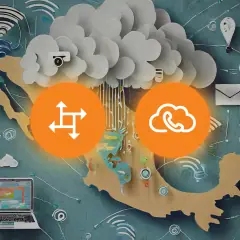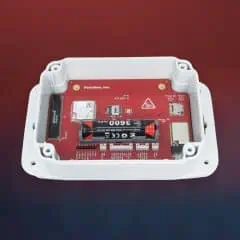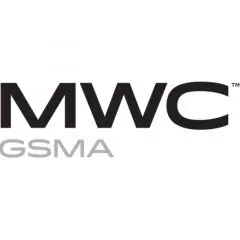Charging customers based on used volume of call recordings and transcriptions
With MR115, you can charge customers for call recording and transcription services based on the total duration of recorded and transcribed calls. For example, you can offer “10 hours of recording & transcription for $10 per month.” Previously, these services were unlimited for a subscription fee. Now, after customers use up the allocated volume, such as 10 hours, you can charge them at a pay-as-you-go rate, e.g., $0.03/minute for recording and $0.05/minute for transcription.
Example
ABC Company activates a bundle with 10-hour quotas for call recording and transcription at $10 per month for their sales manager, John. By the end of June, John has recorded 12 hours of calls with prospects, all of which are transcribed automatically. The initial 10 hours are covered by his bundle, while the additional 2 hours incur charges at $0.03 per minute for call recording and $0.05 per minute for transcription.
As a result, in their June invoice, ABC Company receives a $10 fee for the bundle, along with overage charges from the month that total $3.60 for recording (120 minutes * $0.03) and $6 for transcription (120 minutes * $0.05).
What’s improved?
Call recording and transcription monetization
You can recover the cost of call recording and transcription services, ensuring their profitability.
Find more details here.
New representative self-care web interface
Starting with MR115, representatives will see a new self-care web interface when they log in. This updated version offers the same functionality as the previous representative interface but is more user-friendly and visually aligned with the admin’s web interface. Additionally, it provides representatives with access to details of their commission plan, such as the one-time commission they receive for bringing in a customer.
What’s improved?
Easier administration for representatives
Representatives can now use a new, more user-friendly self-care web interface.
Easier administration for PortaBilling admins
A similar web interface allows PortaBilling admins to more easily assist and advise a representative on working with their self-care web interface.
Find more details here.
Access to the latest news from the PortaBilling login page
When you are focused on ongoing operations, it can be easy to overlook new value-added services and other revenue opportunities. Now, the latest PortaOne news and updates relevant to your current release version are displayed on the PortaBilling login page. This can help your team stay informed about upcoming events, such as webinars, and discover new functionalities that will be beneficial for your business as soon as they are available.
Example
When logging in, a PortaBilling admin on the Owl Telecom team discovers news about a new AI-based call transcription feature. Owl Telecom decides to evaluate this feature, instead of investing resources in developing their own solution.
What’s improved?
Stay informed even without checking the PortaOne website
Receive timely information to help with strategic decisions and potentially reduce development costs.
Find more details here.
Call parking from external apps
You can now enable your PBX customers to park/retrieve calls using third-party or in-house developed apps, such as a receptionist console. For instance, a receptionist can easily park a client’s call by pressing a single button on their desktop app, allowing a colleague to pick it up on any IP phone throughout the office. This feature is implemented via the call control API – the receptionist console app sends an API request to PortaSwitch to park the call.
In the app, a receptionist can park a call by selecting either:
- A parking slot, configured in the company’s cloud PBX and assigned to office IP phones: For example, if two parking slots (e.g., slot 1 and slot 2) are set up via the Cloud PBX Self-Care Portal and mapped to line keys on the company’s IP phones, the receptionist can view available slots in the app and choose one, like slot 1. The call can then be easily retrieved from any IP phone by pressing the corresponding line key.
- A specific extension: If the office phones do not support parking slot configuration, if there are no available slots at the moment, or if a call is intended for a specific person, the receptionist can instead select a colleague’s extension to park the call. A call parked to a specific extension (e.g., 1234) can be retrieved from the IP phone where the extension is registered using a service code (e.g., *71) or from any other IP phone using a service code followed by the extension number (e.g., *711234).
What’s improved?
Better customer experience
Develop competitive business apps that allow PBX users, such as receptionists, to park calls in a simple way.
Find more details here.
Integration with IPLOOK
PortaBilling is now integrated with the IPLOOK mobile core. IPLOOK offers a 3G/4G/5G mobile core with customized services for MNOs and MVNOs. With this integration, mobile operators using IPLOOK solutions can perform real-time charging for internet access and voice calls using PortaBilling.
What’s improved?
Launch services with IPLOOK
MVNOs/MVNEs can launch mobile services using IPLOOK’s flexible solutions.
Find more details here.
Reduced database load by batch update of balances
Now, you can configure the PortaBilling system to accumulate changes to customer or vendor balances over a specific interval, such as 5 seconds, before processing the balance update.
This approach consolidates balance updates into a single operation at the end of the interval, thereby reducing their frequency. Previously, the system would immediately update a customer’s or vendor’s balance after each transaction, such as a call completion. For large customers with many concurrent calls, this frequent updating could result in tens or even hundreds of balance update transactions per second, applied to the same database record, thus producing database locks and delays.
This interval is set globally and is typically 5 seconds. This feature offers flexibility, allowing it to be enabled individually for each customer or vendor based on specific operational needs.
Example
Say the agents of a busy call center are hanging up 10 outbound calls, each costing $0.10, within an interval between 10:00:00 and 10:00:05 (5 seconds duration). Under normal circumstances, this would result in 5 separate “update balance” transactions – and, since these updates are changing the same customer’s balance, each transaction has to wait until the previous one is completed. With the new mode, the system creates a Call Data Record (CDR) for each call, but accumulates the corresponding balance changes in memory instead of updating the customer’s balance 10 times upon creating each CDR. At the end of the 5-second interval, the system updates the customer’s balance in just one transaction for a total of $1 (10 calls * $0.10).
What’s improved?
Efficient handling of large transaction volumes
The system can handle a large number of transactions without requiring extra hardware.
Find more details here.
Accurate tracking of bundle depletion and expiration via external apps
PortaBilling now supports sending two separate events to external apps, such as custom-built web apps, depending on whether a bundle has been depleted or expired. This enhancement ensures precise tracking of bundle depletion/expiration and simplifies the development of external applications. For instance, it enables the delivery of more accurate notifications and personalized promotions to end users through a CRM system.
Example
On June 1, John, a customer of XYZ Telecom, begins a two-week vacation and subscribes to a roaming package offering 10 GB of data for $10, valid for 7 days. During his vacation, he uses 9 GB, leaving 1 GB unused. On June 8, the unused 1 GB expires. PortaBilling notifies the telecom’s CRM system about the quota expiration, prompting the CRM to send John a renewal offer:
“Dear customer, your internet roaming package has expired. You can renew your 10 GB bundle for another 7 days for $10.”
As John’s vacation continues, he renews his package for an additional 7 days. By June 12, he uses up the new 10 GB of data, triggering another notification to the CRM system. This time, John receives an offer for additional data:
“Dear customer, you have used up your 10 GB quota. To stay connected, you can purchase an additional 5 GB of internet for $5.”
John purchases the additional data and stays connected for the remainder of his vacation.
What’s improved?
Easier development of external apps
This enhancement simplifies integrations with external systems, particularly when you need to accurately inform customers about service changes.
Find more details here.
Adjust recurring fees for service packages sold by resellers
When a reseller sells a service package with a subscription to an end user, the service provider also charges the reseller a subscription fee (PortaBilling automatically assigns a separate subscription to the reseller). With MR115, you can customize the subscription fees applied this way to resellers by configuring fixed/relative discounts or upcharges.
Example
Luke, a reseller’s customer, frequently experiences internet service issues. To maintain a positive relationship, the reseller offers Luke a 15% discount on their “Internet Access $30” subscription. To offset this revenue loss, the reseller negotiates a similar discount with the service provider. The service provider’s admin then navigates to the reseller’s record in PortaBilling, locates the subscription “Internet Access $20 (for Reseller)” assigned to the reseller via the package used by the customer’s account, and applies a 15% discount to the reseller’s subscription fee.
Meanwhile, a different reseller customer, Judy, requests an internet service that will remain operational during power outages. Such a service requires additional equipment, resulting in a 20% upcharge from the service provider. Once Judy agrees to the increased subscription fee, the reseller applies a 20% upcharge to the “Internet Access $30” subscription that has been assigned to the customer’s account. Similarly, the service provider’s admin applies a matching 20% upcharge to the subscription “Internet Access $20 (for Reseller)” assigned to the reseller.
What’s improved?
Easier administration
There is no need to create separate subscription plans when resellers negotiate special pricing.
Find more details here.

















